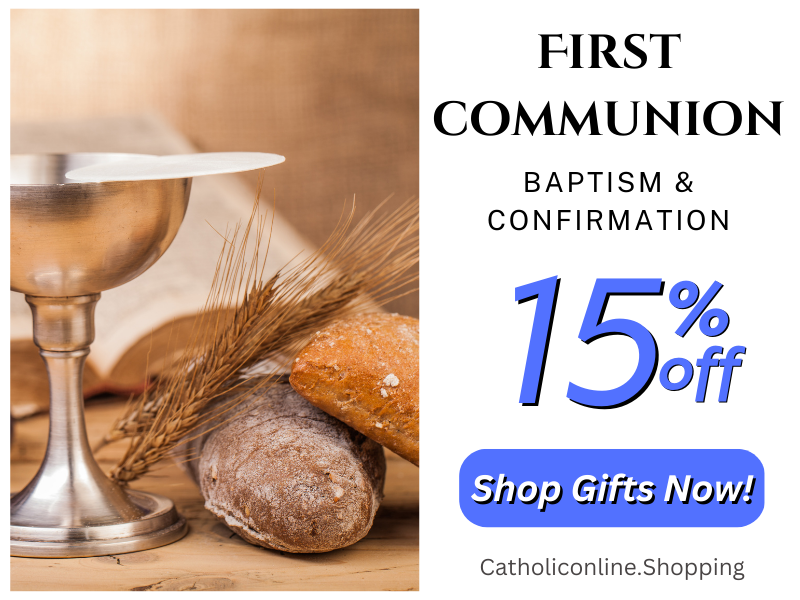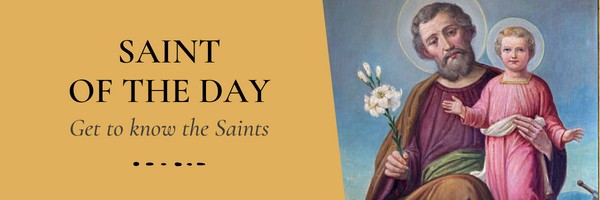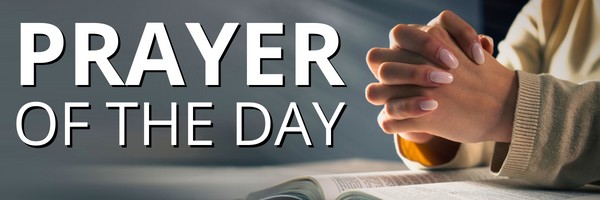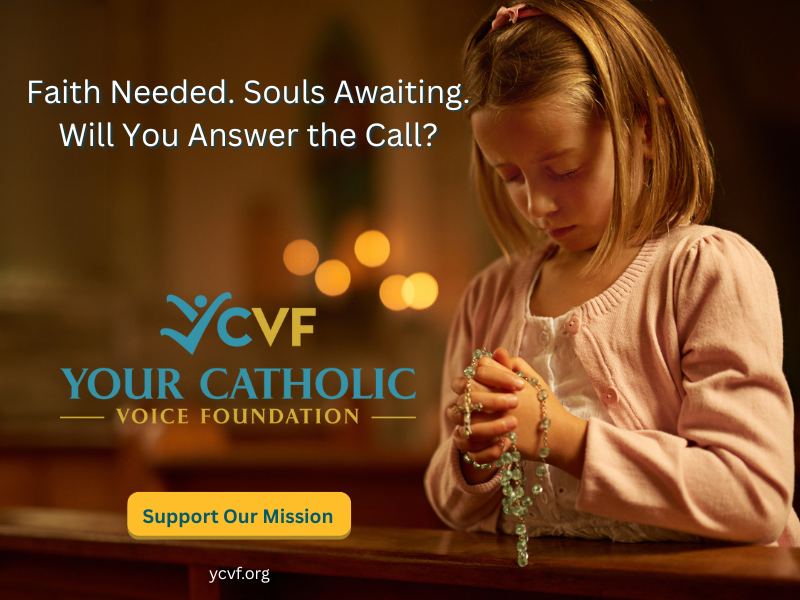We ask you, urgently: don't scroll past this
Dear readers, Catholic Online was de-platformed by Shopify for our pro-life beliefs. They shut down our Catholic Online, Catholic Online School, Prayer Candles, and Catholic Online Learning Resources essential faith tools serving over 1.4 million students and millions of families worldwide. Our founders, now in their 70's, just gave their entire life savings to protect this mission. But fewer than 2% of readers donate. If everyone gave just $5, the cost of a coffee, we could rebuild stronger and keep Catholic education free for all. Stand with us in faith. Thank you.Help Now >
How we Worship is How we Will Live
FREE Catholic Classes
Worship reveals what we truly believe and how we view ourselves in relationship to God, one another and the world into which we are sent to carry forward the redemptive mission of Jesus Christ
Highlights
Catholic Online (https://www.catholic.org)
3/20/2008 (1 decade ago)
Published in U.S.
LOS ANGELES (Catholic Online) - There is a Latin maxim that addresses the centrality of worship in the life, identity and mission of the Church; "Lex Orandi, Lex Credendi".
The phrase in Latin literally means that the law of prayer ("the way we worship"), and the law of belief ("what we believe"). It is sometimes written as, "lex orandi, lex credendi, lex vivendi", further deepening the implications of this truth - how we worship reflects what we believe and determines how we will then live. The law of prayer or worship is the law of life.
Or, even more popularly rendered, as we worship, so will we live...and as we worship, so will we become!
The Church has long understood that part of her role as mother and teacher is to watch over worship, for the sake of the faithful and in obedience to the God whom she serves. How we worship not only reveals and guards what we believe but guides us in how we live our Christian faith and fulfill our Christian mission in the world.
Worship is not an "add on" for a Catholic Christian. It is the foundation of Catholic identity; expressing our highest purpose. Worship reveals what we truly believe and how we view ourselves in relationship to God, one another and the world into which we are sent to carry forward the redemptive mission of Jesus Christ. How the Church worships is a prophetic witness to the truth of what it professes.
Good worship becomes a dynamic means of drawing the entire human community into the fullness of life in Jesus Christ within His Body, the Church. It attracts - through beauty to Beauty. It is an invitation into the very Trinitarian Communion. Worship informs and transforms both the person and the faith community which participates in it. There is reciprocity between worship and life.
Having spent decades in ecumenical work, I find it odd that right when so many of our Christian friends in other confessions and communities are searching for a deeper encounter with the beauty of the Lord in formal worship; for sign, symbol and mystery, for a connection with the ancient Church in her divine worship, some parts of the Catholic Church are discarding the very treasures that make her formal liturgical worship so beautiful, full of mystery and so compelling and attractive to those seeking a deeper experience of worship and Christian life.
Why all this minimalism?
The minimalism is obvious when you enter the worship space of some contemporary church buildings. Sometimes there are no signs or symbols of our faith anywhere. There are no icons or images reflecting the heavenly touching the earth, drawing you into a transcendent encounter with the God who we receive and in whom we are invited to live and move and have our being.
The worship space is often filled with people conversing about the week - no screaming mind you, but nothing that sets it apart as the place where God will manifest Himself and give Himself away, body, blood, soul and divinity, to we who are mere mortals invited into His throne room. The tabernacle is often in a separate small nondescript room outside of the worship space.
I am not a "traditionalist" Catholic, although I understand and respect those who are. I am just a Catholic Christian; a "revert", drawn back to the fullness of Christianity that is dynamic, orthodox, faithful Catholic life and practice.
I have the utmost respect for my brethren who are Protestants in each of their various confessions and communities. However, I am not one, by choice. I do not want a Protestant looking church building or a stripped down Catholicism whose worship seems more protestant than Catholic. I do not want barren liturgy and symbol-less Catholicism.
Some self styled "experts" took the richness, the depth that still draws so many to the treasure that is Catholic worship and life. Fortunately, their numbers and influence are dwindling.
The Catholic seminaries that are full are being filled with candidates who want the vibrant, symbolic, richly liturgical, devout fullness of Catholic faith and life. The ecclesial movements are flourishing, drawing men and women who also want the fullness of Catholic worship, faith and life in all of its rich beauty.
The "new" Catholics, coming into full communion from other Christian communities, are flocking to the "dynamically orthodox" and faithful Catholic parishes. The symbols are coming back and new ones are emerging.
There was a movement called Iconoclasm ("Image-breaking") in the eighth and ninth centuries in the Eastern Church. It became a full scale heresy. The term has come to be associated with those who rejected icons, but it speaks now to a broader contemporary problem.
Icons are meant to put us in touch with the transcendent mysteries of our faith. I pray with icons and have for many years. I cherish their liturgical role in the Eastern Church. In fact, one would never find an Eastern Church, Catholic or Orthodox, without icons.
The contemporary "iconoclasts" are those who seek to de-mystify Christian faith, life, worship and practice. They are not the future of the Catholic Church but the past.
Some of these "experts" thought that the symbols of our worship, our faith and our life were a problem. When they strip our sanctuaries and make our liturgical experiences barren, they think they are helping us by making the faith more 'relevant", "meaningful" or "contemporary". They are sadly mistaken and have done the Church and her mission a disservice.
They fail to grasp that, by nature and grace, human persons are symbolic. Man (and woman) is created in the image of God, and is a divine icon. Jesus Christ is the Icon of the Father. Symbols touch us at a much deeper level than words or emotive or affective participation can. They touch us at the level where authentic religion and deep worship truly begins. It is there where we hunger the most for God.
"Lex Orandi, Lex Credendi" is still true. As We Worship, so we still will live
---
'Help Give every Student and Teacher FREE resources for a world-class Moral Catholic Education'
Copyright 2021 - Distributed by Catholic Online
Join the Movement
When you sign up below, you don't just join an email list - you're joining an entire movement for Free world class Catholic education.
- Easter / Lent
- Ascension Day
- 7 Morning Prayers
- Mysteries of the Rosary
- Litany of the Bl. Virgin Mary
- Popular Saints
- Popular Prayers
- Female Saints
- Saint Feast Days by Month
- Stations of the Cross
- St. Francis of Assisi
- St. Michael the Archangel
- The Apostles' Creed
- Unfailing Prayer to St. Anthony
- Pray the Rosary
![]()
Copyright 2025 Catholic Online. All materials contained on this site, whether written, audible or visual are the exclusive property of Catholic Online and are protected under U.S. and International copyright laws, © Copyright 2025 Catholic Online. Any unauthorized use, without prior written consent of Catholic Online is strictly forbidden and prohibited.
Catholic Online is a Project of Your Catholic Voice Foundation, a Not-for-Profit Corporation. Your Catholic Voice Foundation has been granted a recognition of tax exemption under Section 501(c)(3) of the Internal Revenue Code. Federal Tax Identification Number: 81-0596847. Your gift is tax-deductible as allowed by law.











